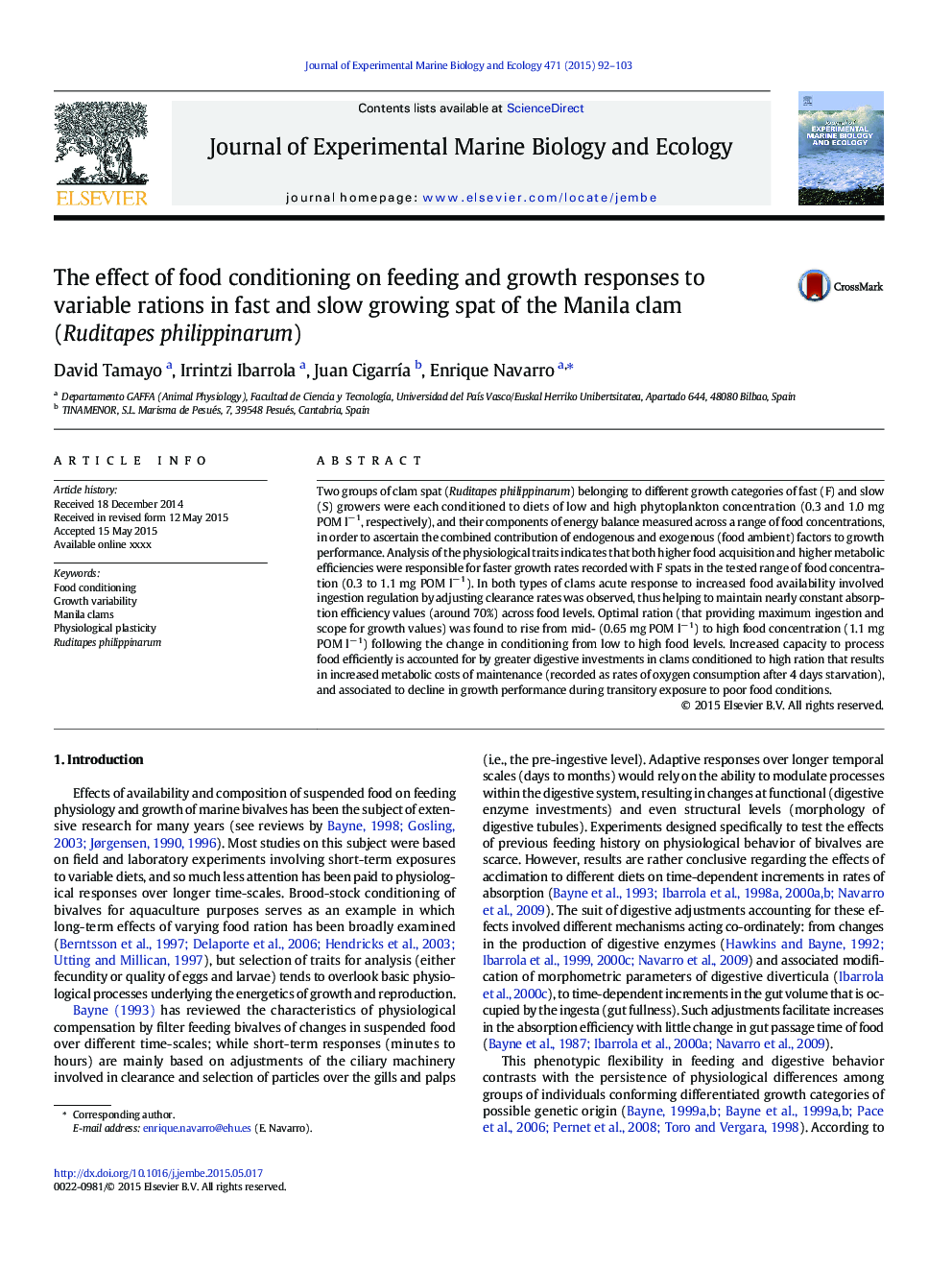| Article ID | Journal | Published Year | Pages | File Type |
|---|---|---|---|---|
| 6303856 | Journal of Experimental Marine Biology and Ecology | 2015 | 12 Pages |
Abstract
Two groups of clam spat (Ruditapes philippinarum) belonging to different growth categories of fast (F) and slow (S) growers were each conditioned to diets of low and high phytoplankton concentration (0.3 and 1.0 mg POM lâ 1, respectively), and their components of energy balance measured across a range of food concentrations, in order to ascertain the combined contribution of endogenous and exogenous (food ambient) factors to growth performance. Analysis of the physiological traits indicates that both higher food acquisition and higher metabolic efficiencies were responsible for faster growth rates recorded with F spats in the tested range of food concentration (0.3 to 1.1 mg POM lâ 1). In both types of clams acute response to increased food availability involved ingestion regulation by adjusting clearance rates was observed, thus helping to maintain nearly constant absorption efficiency values (around 70%) across food levels. Optimal ration (that providing maximum ingestion and scope for growth values) was found to rise from mid- (0.65 mg POM lâ 1) to high food concentration (1.1 mg POM lâ 1) following the change in conditioning from low to high food levels. Increased capacity to process food efficiently is accounted for by greater digestive investments in clams conditioned to high ration that results in increased metabolic costs of maintenance (recorded as rates of oxygen consumption after 4 days starvation), and associated to decline in growth performance during transitory exposure to poor food conditions.
Related Topics
Life Sciences
Agricultural and Biological Sciences
Aquatic Science
Authors
David Tamayo, Irrintzi Ibarrola, Juan CigarrÃa, Enrique Navarro,
